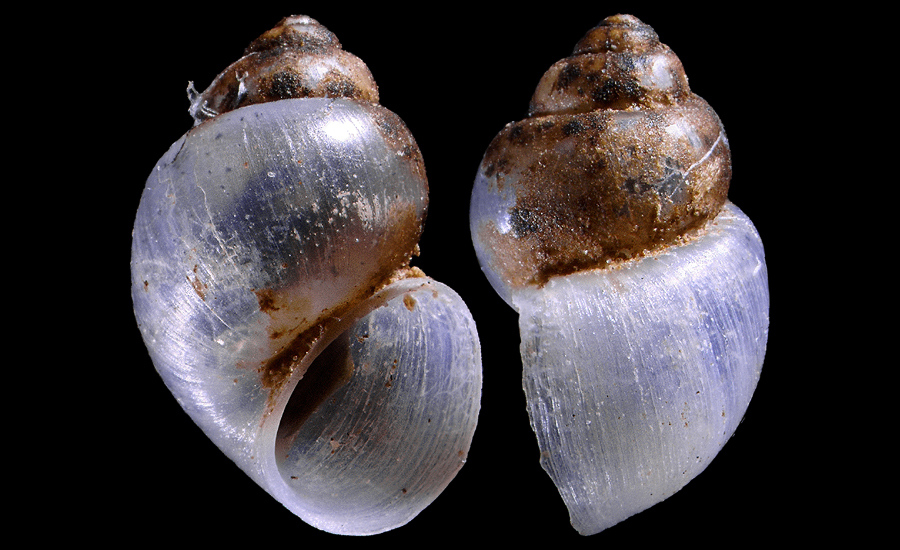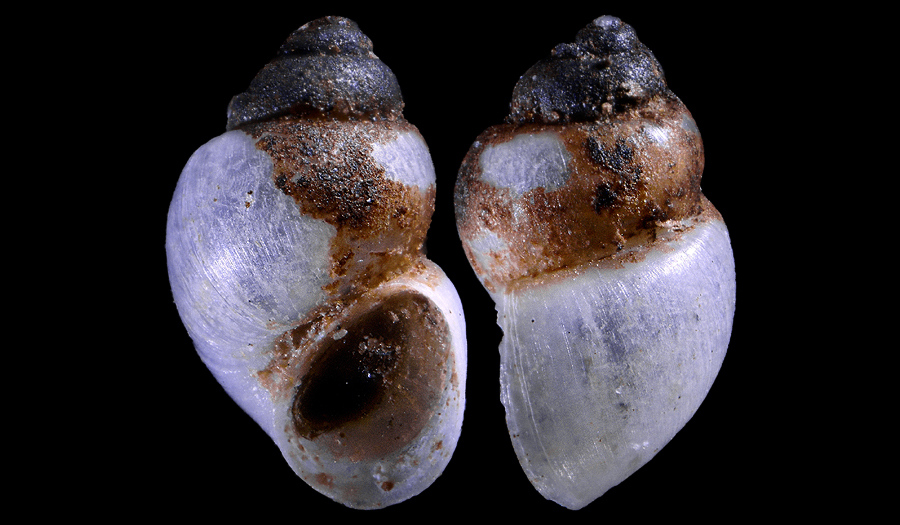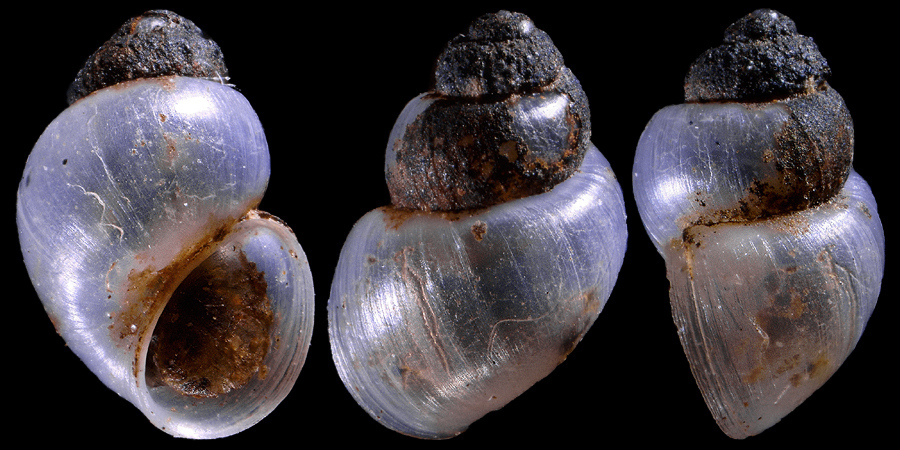Mercuria tachoensis (Frauenfeld, 1865)

Original taxon: Amnicola tachoensis. Synonyms: bayonnensis Locard, edmundi Bœters.
Shell « conical, with pointed apex and straight sidelines; last whorl about 46-47% of total height of shell; umbilicated; of transparent milky colour; 4.25-4.50 whorls, swollen and very convex, respectively, separated by a deep suture; last whorl before the aperture neither ascending nor descending on shell wall; aperture obliquely broad ovate, a little narrowed above; peristome continuous, usually touching the shell wall over a short distance; outer margin simple, basal margin and columellar edge faintly broadened, palatal, basal and columellar margin at best slightly thickened. » – Bœters & Falkner: “The genus Mercuria Boeters, 1971 in France (Gastropoda: Caenogastropoda: Hydrobiidae). West-European Hydrobiidae, Part 13”, Zoosystema vol. 39(2), Paris 2017, p.231 under the taxon Mercuria bayonnensis.
Above: subadult specimen collected in a spring, beach of Bidart, south of Bayonne, Pyrénées-Atlantiques, SW. France. 2,9mm. Altitude ≈ 20m.

« The shape of the shell of M. bayonnensis varies from less elongated to rather globular which allows a separation from M. baudoniana (Gassies, 1859), since the shell of M. baudoniana is even more elongated than that of the most elongated specimens of M. bayonnensis. Further, a striking feature of diffentiation can be seen in the fact that M. bayonnensis can be accompanied by Theodoxus sp., whereas M. baudoniana is accompanied by Anisus spirorbis (Linnaeus, 1758) and Omphiscola glabra (O.F. Müller, 1774) which tolerate falling of water bodies to dryness which does not apply to Theodoxus sp. » – Ibid. Same spot. 2,7mm.

« In Mercuria bayonnensis the last two whorls are more or less smooth (as from the Nive and at Bidart and Biarritz), except for some irregularities of growth whereas in both subspecies of M. sarahae at least these whorls are striatulate (as at Thouaré-sur-Loire and Locmaria). » – Ibid.
Same spot. 2,5mm.